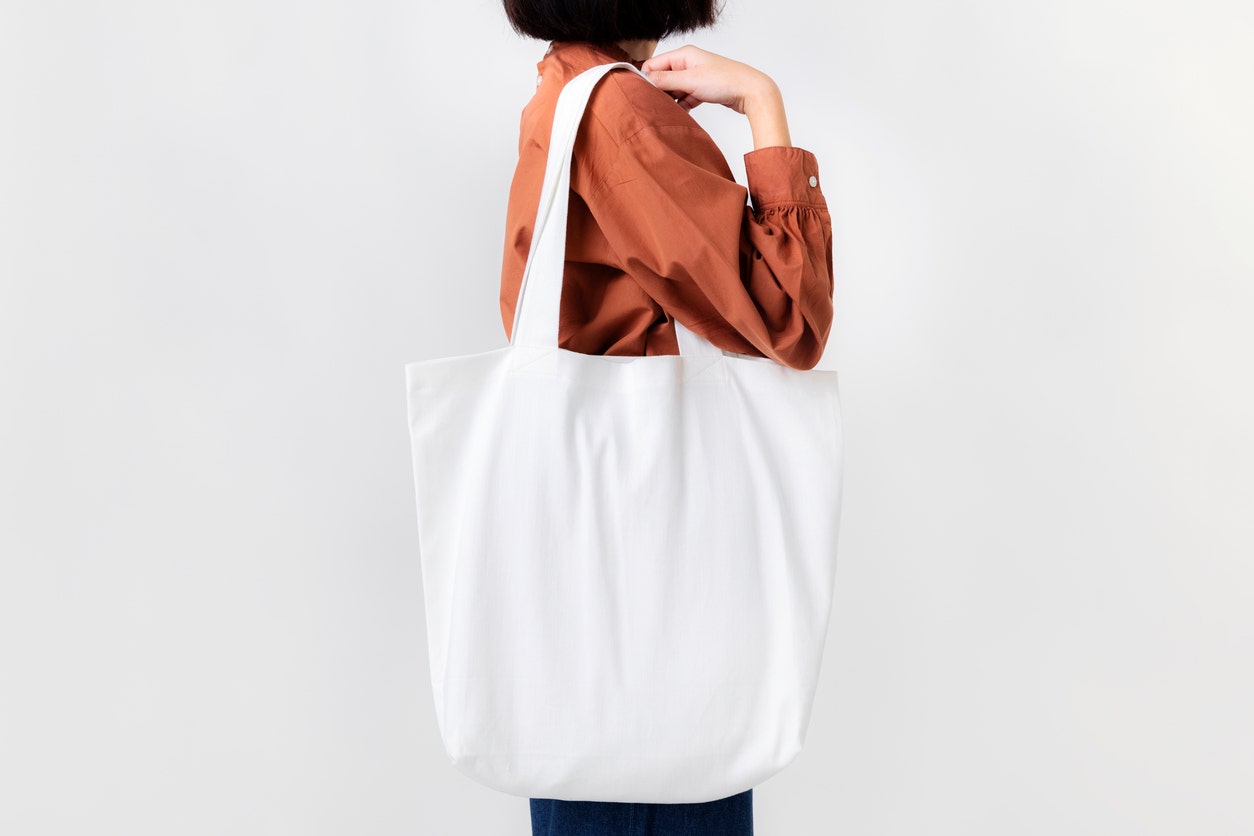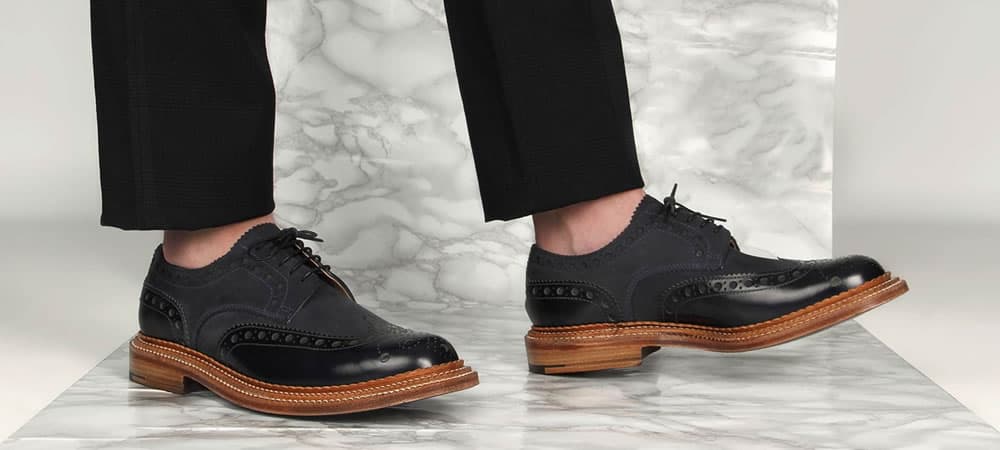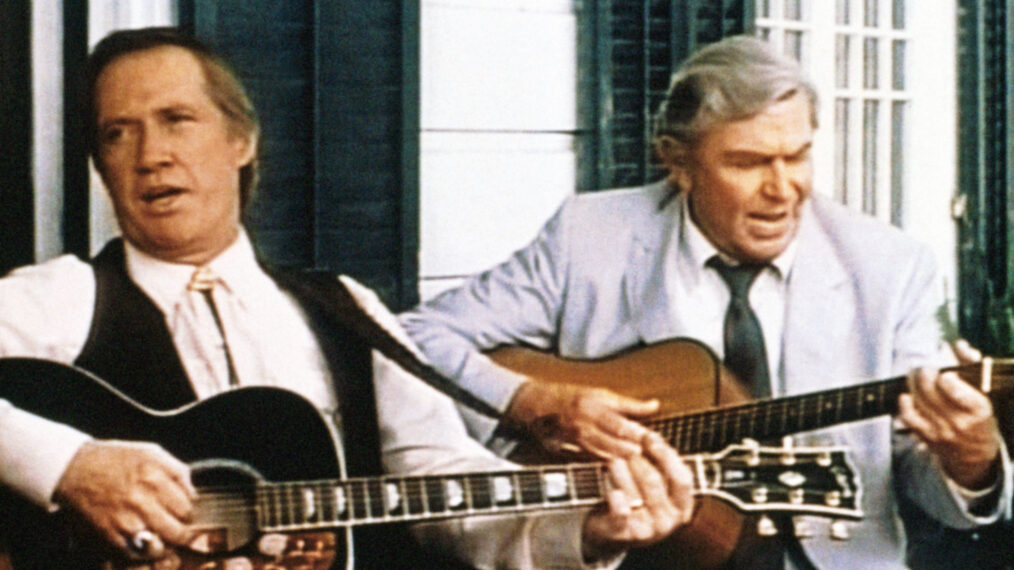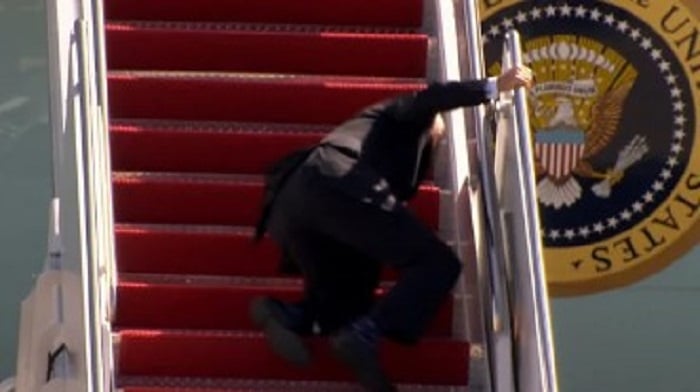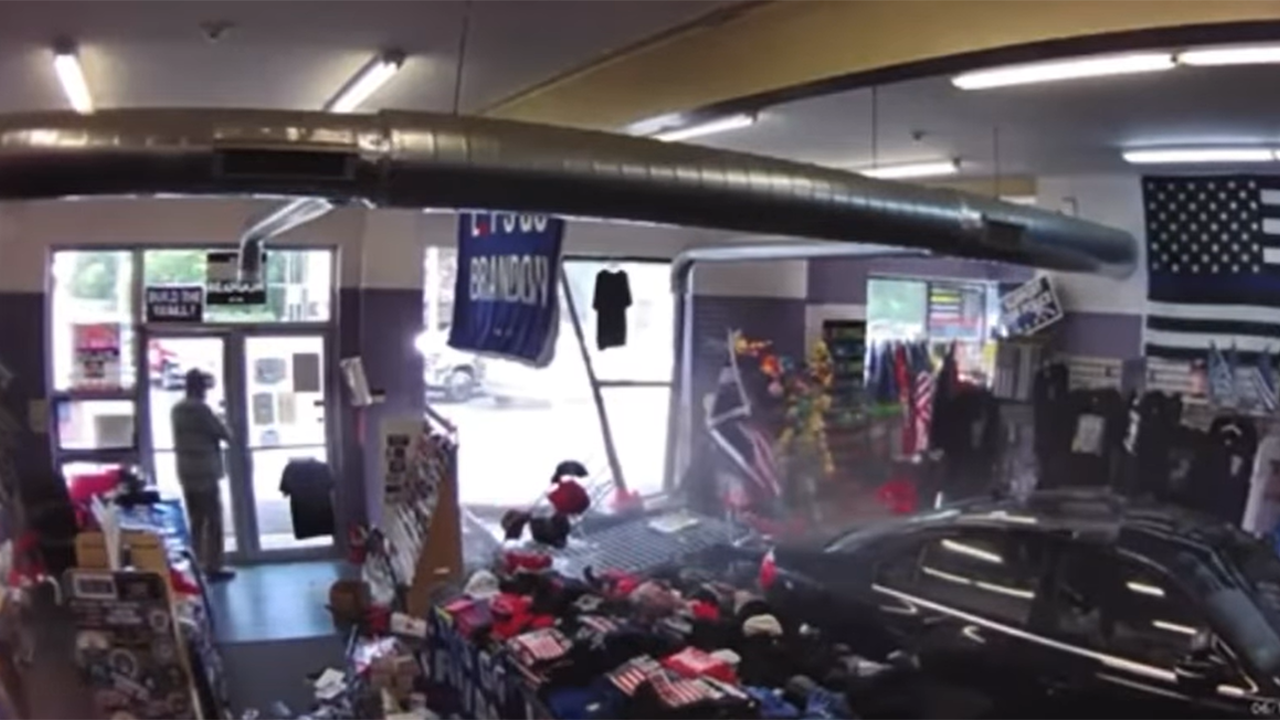You can sweep and vacuum all you like, but if you have hardwood, vinyl or tile floors and run into sticky residue or stuck-on grime, you’re going to have to mop. There’s good news, though — Mops have come a long way since the bulky, stringy, soggy swabbers of old, and are smaller, tidier, and easier to use than ever. Most will be able to tackle a wide range of flooring types too, making it easy to get your entire home clean with fewer tools and a minimum of fuss..
We put 11 popular mops — including string, spin, spray and pad models — to the test, evaluating them on how they performed while tackling three challenging cleaning tasks as well as on overall build and durability. We were able to confidently land on three favorites that should let you tackle any cleanup large or small, on any surface in your home.
Best mop overall
The O-Cedar EasyWring Microfiber Spin Mop combines a hands-free wringing bucket with lightweight, triangular mop head that’s perfect for both mopping and spot-scrubbing on any surface.
Best mop for smaller jobs
The OXO Good Grips Microfiber Spray Mop Kit features a multifunctional design—providing two heads in one—making it a convenient tool to quickly grab and use for both quick cleanups.

Wringing out a mop head is generally a messy task, but the new generation of spin mops has made the task a lot easier. The O-Cedar EasyWring Spin Mop has the process dialed in, making it easy to keep your mop head clean and ready to go. It’s also a solidly built mop with a smart, easy-to-handle design that did a great job scrubbing up dirt and grime in our tests.
A manual foot pedal on the rear of the EasyWring bucket powers a spinning basket that, when a wet mop head is placed inside, quickly removes excess liquid. It works extremely quickly, and since you don’t have to bend over or even use your hands at all, it really cuts down on overall cleaning time. It felt solid and durable as well, and even when pumping away as hard as I could, and never felt like it was vulnerable to cracking or snapping.
The mop itself is comfortable to use and its lightweight design means it’s easy to carry around and maneuver while you mop—you can even adjust the length from 24 to 48 inches to suit your height or the reach your job requires. The mop head is made of microfiber strings that are more absorbent than they appear, and can really soak up large amounts of liquid in a single pass. The head’s triangular design makes it easy to get into corners and to clean around furniture legs. I found that the relatively short length of these strands also made it easy to spin and dry out the head, unlike the longer loops of the Libman Wonder Mop, which were messier and more challenging to control when soaking wet.
Most importantly, the O-Cedar’s scrubbing capabilities were superior to the pad-based mops we tested. The mop head fared well in my bathroom tile tests, easily taking care of soap residue, soaking up cleaning liquid, and capturing loose dirt without just moving it around. The head cleaned up easily in the laundry using a regular wash and dry cycle too, and was ready for action again the following day. Plus, since the mop ships with three microfiber scrubbing heads, you’ll be able to tackle extra-large cleaning projects without needing to wait for a wash cycle to get finished.
The only real drawback to this mop is the large bucket size. At 20 inches long it might be too bulky to store in a bathroom closet, although this large size does make it practical for larger, whole-house mopping jobs.

While it wasn’t quite as effective in handling dirt as our top pick, the lightweight, hassle-free design of the multifunctional OXO Good Grips Microfiber Spray Mop makes it a perfect choice for tackling quick cleanups and spills.
The manual trigger was large enough to use comfortably, and also felt nice and sturdy when pumping away; we preferred it to battery-powered sprayers like the Swiffer WetJet Hardwood and Floor Spray Mop. At 2.4 pounds it was effortless to carry around the house and up and down the stairs with ease.
Our favorite feature of this mop is the detachable mop pad. If you come upon a stubborn spot that it can’t remove, you can simply detach it with a simple latch, revealing a small scrubbing head. The small size of the scrubber allows you to really lean into it as you work, and the rougher texture took care of even the toughest sticky residue. Often, features like this feel like gimmicks — unreliable, ineffective or just out of place in the overall design of the product — but not in this case. The scrubber pad is both useful and honestly really fun to use. We found ourselves searching for spots and stains to use it on.
The wet mopping pad was absorbent enough to work well on hardwood, and the spray trigger made it easy to control the precise amount of cleaner being dispersed. The pad didn’t do as good a job at capturing and removing the potting soil mess on the bathroom tile as the O-Cedar, however, and ended up spreading it around more than actually picking it up.
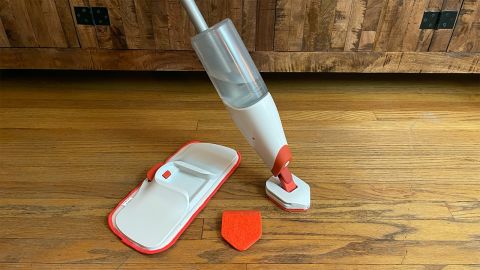
The OXO kit includes a great selection of accessories and attachments, especially considering the low price. You get 3 wet mopping pads, 3 scrubbing pads, 2 reusable bottles, and thanks to the hanging loop on top of the handle, it won’t need to take up any valuable floor space. The instruction manual even includes a pair of recipes for making your own cleaning solution.
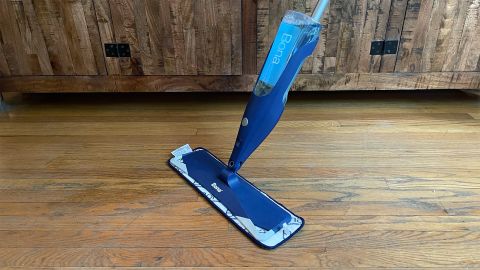
If your priority is cleaning hardwood flooring, the Bona Hardwood Floor Premium Spray Mop is a great choice. It includes a 34-oz bottle of Bona hardwood floor cleaner—a product that we’ve used on hardwood flooring for years—which can easily be refilled with large Bona refill jugs. This bottle was really simple to pop in and out too.
The manual trigger makes it easy to dispense a precise amount of cleaner, so we never had to worry about too much soaking the flooring. The mop was very comfortable to use, thanks to a soft foam grip on the handle, and the extra wide pad—16.5 inches—let us cover a lot of area in a short time.
This pad can be used to dry mop as well, so there’s no need to pull out a separate broom and dustpan to prep your floors. The kit only includes a single pad, however, so we suggest grabbing an extra to have on hand for large jobs.
Large liquid spills and stuck-on grime, dirt and other residue on hard floors that sweeping and vacuuming just can’t handle call for a mop. By combining a liquid cleaner with a textured scrubbing head, mops can dislodge the spill or residue, as well as absorb and contain it, leaving you with a clean floor. (It’s worth noting that for small spills, a cleaning spray and a rag or paper towels should suffice, but it’s not really practical to clean a whole room or even a large area that way).
There are three basic types of mops to choose from: traditional “string mops” with a shaggy head that you wring out in a bucket, squeeze, or spin out, spray mops that have a flat pad and use a built-in reservoir to spray cleaner onto the floor, and basic pad-and-handle designs that require you to apply floor cleaner from a separate container.
String mops are good for larger cleaning jobs since their buckets provide a large supply of cleaner, meaning you can clean large areas (there’s a reason you’ll see these used by professional cleaners). With longer handles designed to be used without bending over (many newer designs are even adjustable), they are much more comfortable to use than old-school options, and new materials like microfiber make the pads easier and faster to wring out than older string mop heads. The buckets themselves can still be bulky and heavy to move around though, so keep that in mind.
Pad mops are just that—a pad, typically microfiber and either disposable or washable connected to a handle—and typically don’t come with a bucket or cleaning reservoir. Some pad mops are meant to be used dry on hardwood surfaces, while others can be used with a cleaning solution, though you’ll need to apply that from a separate container. Some are available in very wide sizes, and can be effective and efficient for lighter cleaning in large rooms without a ton of obstacles.
Spray mops are akin to pad mops, but have a built-in cleaner reservoir and applicator. are relatively low maintenance, and typically provide everything you need to get mopping right away. Their pads don’t have as much surface area as string mops and ths aren’t able to absorb as much liquid, and you don’t have a way to easily wring them out when they get saturated, so they are better suited for smaller mopping jobs like tidying up a single room, unless you have a supply of pads ready to switch out during big projects. Some spray mops, like the Swiffer WetJet Hardwood and Floor Spray Mop use disposable pads, which are convenient for those who don’t want to hassle with laundry, but are less eco-friendly than reusable pads.
Mopping is an essential element of cleaning any home with hard floors, but it takes a little planning. First, make sure to clear the floor of dry debris like pet hair and dirt — whether you do that with a handheld vacuum or cordless vacuum or by sweeping, or dry mopping (some mops are designed for or include a separate pad specifically for dry mopping). If using a string mop, fill your bucket with your cleaning solution (choose one that is designed for your specific flooring type), dunk your mop head and then wring it out until it’s damp but not dripping wet. If it’s too wet, you can damage your floors, and increase the drying time.
Then, using a figure-eight pattern, work from one end of the room to the other, pushing the mop but walking backwards so you don’t tread on the newly damp floor. If you encounter stubborn spots, apply some extra downward pressure and go back and forth a few extra times. Once your mop becomes dirty—this will depend on the state of your floors to begin with—rinse your mop head in the bucket, wring it out, and continue mopping. For especially dirty floors, you may need to employ a second “rinsing” bucket (or use your sink) to keep your mop head clean enough to work effectively.
You use a spray mop or flat pad mop in essentially the same way—working your way backwards—but instead of figure-eights, work in straight lines. When the pad becomes too dirty to clean effectively, either rinse it off in the sink and wring it out by hand, or replace it with a fresh one.
Although some flooring materials—namely hardwood and some engineered laminate materials— require a more delicate touch, most hard flooring should be safe to mop.
Ceramic tiles and linoleum are sturdy and are typically sealed well enough to be mopped without incident, but floors with more seams, like hardwood and vinyl plank can be more vulnerable to excess moisture. For these floors, make sure to use only the least amount of liquid possible to get the job done, and never allow water or cleaning solution to sit or pool for any length of time.
You should also make sure to use the proper cleaning solution for your specific type of flooring. You’ll find many cleaning solutions formulated for different surfaces, though a dish soap and water solution works well for many surfaces. You’ll want to stay away from any abrasive cleaners, keep oil soaps to wood floors, and only use bleach-based cleaners on tile floors. If you’re not sure what to use, or whether or not your mop can be used on your flooring (especially if you’re dealing with materials like cork or bamboo), take the time to carefully review the manufacturer’s recommendations.
If your floors are severely worn, cracked or buckled you might want to consult with a flooring professional about repairs before beginning a mopping routine.
Regardless of the type and size of the mop, it should be easy and comfortable to use. We paid close attention to both how the mop felt in our hands, as well as how easy—or difficult—it was to use any of its components and accessories. We looked at everything from attaching pads and heads, removing filling and inserting cleaning reservoirs, to how well the head could pivot and rotate around obstacles.
We noted if any assembly was required when unboxing each mop, and if so, how straightforward or complicated it was. We also reviewed the instruction and use manual for each mop, making sure they clearly explained how to put their product together, and we looked at whether the mop, bucket, and accessories were easy to store when not in use.
We checked on whether the mop itself and any accessories or attachments, like liquid containers, pads, buckets, made of quality materials, and took note if any components were flimsy, or felt like they could fail with frequent use.
If the mop heads were machine washable—nearly all of them were—we ran them through a full wash and dry cycle according to their instructions. We noted how well they held up during washing, examining if they begin to unravel/ fall apart or appear to lose their structural integrity or feel like they lost any of their absorbency or scrubbing texture.
We assessed performance on the three types of flooring that most commonly require mopping in the average home.
- Hardwood Flooring: We used each mop to completely mop a large section of sealed hardwood flooring, paying close attention to how well it removed dirt as well as absorbed excess liquid. We noted how dry (or not dry) we were able to get the mop head, since too much liquid can easily damage hardwood flooring, especially older planks like mine. We also checked how the floors looked after drying, making note of any leftover swirls, streaks, or leftover cleaning residue.
- Linoleum Kitchen Tiles: After pouring 1/4 cup of soda on linoleum kitchen tiles we allowed it dry for a bit, then used each mop to clean it up. This helped to see how effective each mop was when it came to moderate scrubbing, as well as how absorbent they were in terms of removing excess liquid.
- Bathroom Tile: To test each mop’s ability to clean up stubborn bathroom floor messes, we rubbed a bar of soap on hard bathroom tiles, then rubbed in a handful of potting soil, creating a truly challenging mess. Each mop was judged based on its ability to both scrub up the soap residue, absorb the cleaning liquid, and capture and contain the dirt without just pushing it around the room.
oshang Flat Floor Mop and Bucket Set
$49.99 at Amazon
The oshang Flat Floor Mop’s distinctive bucket features two slots—one for dunking your mop head and the other, narrower slot, for squeegeeing the dirty water off and drying the pad. You can run the mop head through the drying slot as many times as you like, depending on how much water you want to remove. This made it effective for both hardwood floor work, as well as tasks that you want a bit more water for, like the soap residue on bathroom tiles (though the pads weren’t the most effective scrubbers we tested). It also includes 2 wet and 2 dry pads, so you’re set for larger tasks. The compact footprint of the bucket makes this a good option for those who don’t have a lot of storage space.
Bosheng Mop and Bucket
$39.99 at Amazon
The Bosheng’s slotted bucket design is great for getting your mop head dry without bending over, it wasn’t as easy to use, durable, or effective as the otherwise very similar oshang Flat Floor Mop and Bucket Set, which we would recommend in its place unless you’re on a very tight budget.
This mop features an extra-large head—15 x 5 inches—and a nearly 60-inch handle, making it well-suited for covering large areas quickly and efficiently. The clamping mechanism that attaches the pad to the mop head was impressive as well, and allowed attaching and removing the pad far more easily than other pad mops that used velcro attachments. The thick, heavy-duty stainless steel handle made it easy to maneuver the mop around the floor, and the pads can be used to dry mop, so no need to break out the broom and dustpan. The main drawback of this mop was the connection between the handle and the mop head itself, which felt flimsy and unstable. This was a shame because the rest of the unit had a nice, sturdy feel to it. The large size of this mop head could also be inconvenient for those with tight or cluttered spaces.
Though the Libman Wonder Mop’s substantial microfiber strips both good at scrubbing and long enough to reach around furniture legs and get into tight spaces (between the wheels of a mobile kitchen island, for instance) and the packages included 3 extra mop heads. The microfiber strips that make up the head were long enough to wrap around furniture legs and the wheels of my kitchen island, the mop head popped right off during used, and required reattachment several times, so we’re unsure that it would stand up under regular use.
The O-Cedar cloth mop is well-built, with a sturdy metal pole that threads right into the mop head, while still remaining extremely lightweight at just 1.3 pounds. The microfiber loops are absorbent, but more importantly, they made it possible to perform aggressive scrubbing on problem areas. This made it one of the standouts in our kitchen and bathroom tile testing, and the looped design was ideal for capturing and containing dirt and debris. It didn’t fare too well on hardwood flooring though, as it just didn’t have the surface area to efficiently cover larger rooms. If you prefer a simple looped mop head, and are willing to purchase the separate quick-wring bucket needed for wringing it out, this could be a great choice.
There’s a lot to like about this electric mop, as well as a few things that kept it out of the top spot. First of all, it’s really well-made, and the entire unit felt sturdy and solid. It came nearly fully assembled too, you just attach the top part of the handle to the base, and that’s it, you’re ready to go. The twin rotating pads velcroed easily to the base, and when turned on, worked almost like a self-propelled lawnmower, requiring almost no effort to push forward. Unfortunately, even though this mop did fairly well in our testing, this rotating action did end up leaving some faint swirl patterns on hardwood and kitchen tile. These were fairly easy to remove with another mop, but that really defeats the purpose altogether. The automatic operation also means that you aren’t really able to add any extra pressure if you encounter stubborn spots, so it’s only suited for lighter-duty cleaning. At over $100, this is an expensive option but it did include a large, 80 oz jug of multi-surface cleaner.
This large head makes it perfect for cleaning a large room with minimal passes—it worked incredibly fast in our hardwood floor testing—but it is inconvenient to use in tighter spots, like in the bathroom. That said, it did perform well overall, and was absorbent enough to really soak up a decent amount of liquid. It did suffer the same problem as other large pad mops, like the MR. SIGA Professional Microfiber Mop, in that its large surface area made it difficult to apply direct pressure to stubborn grime and sticky residue — it’s really better for lighter work. Putting a foot on the mop head and pressing down does the trick, but that’s certainly not an ideal solution, and likely not great for overall longevity of the mop. It’s worth noting that this mop includes a dedicated dust mop head (no other mop we tested had such an accessory), which worked really well for clearing dust and pet hair..
It’s hard to deny the convenience of the disposable pads of the Swiffer WetJet Hardwood Floor Spray Mop. Instead of having to deal with reusable pads that need to be laundered after every use, you simply use these until they get dirty, and toss them in the trash (this may not be the most eco-friendly approach, however, and several third-party providers offer reusable pads). Just remember that the more you clean, the more pads and cleaning solution you’ll need to purchase, which can really add up if you have a lot of floor to mop. The pads included with this model were not as absorbent as we would like, and struggled in our bathroom tile tests — they felt too “slippery” to actually capture and pick up the soap residue and dirt. That said, the mop is solidly built, and the dual sprayers covered an impressive amount of flooring. The dispenser is battery-operated. which could be a nice perk for those who don’t want to continually squeeze a trigger every time.




